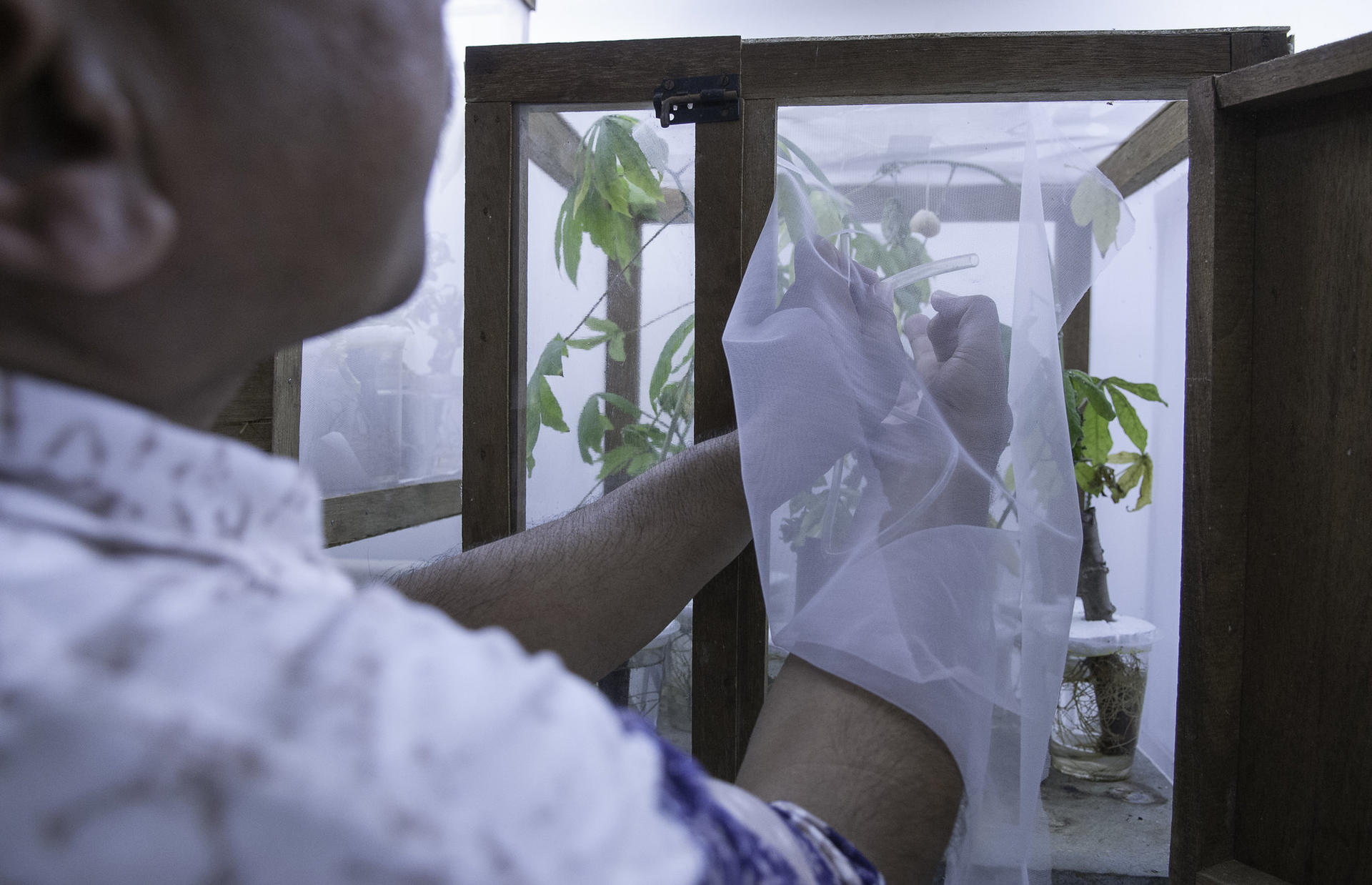Press and News $2.1million Grant to “Mine” For New Cassava Traits

The Alliance of Bioversity International and International Center for Tropical Agriculture (CIAT) has received a $2.1M sub-grant from the Bill and Melinda Gates Foundation for an Allele Mining project in the staple crop cassava, which will lead to the discovery of traits that will help develop varieties better suited to a changing climate.
By Andrew Wight
Drought-tolerant and high in starch, cassava is an important crop in Africa, Asia, and Latin America and according to the International Development Research Centre (IDRC), it is critical to the survival of over 800 million people in the developing world.
Xiaofei Zhang, a researcher and cassava breeding lead at the Alliance says the world’s agricultural genetic collections contain thousands of samples of different varieties (including landraces, which are varieties developed by farmers over hundreds or even thousands of years) and that this genetic diversity could hold the key to the traits needed by farmers to adapt to climate change.
The Alliance has 5,959 Cassava accessions (distinct samples) in its genebanks, a giant library of plant samples including data on their genetics and even geospatial collection data, that is, time-based data that is related to a specific location on the Earth's surface. Of these, 4,951 are landraces, and 3,174 have this geospatial data.
Alleles, that is, any one of two or more versions of the DNA sequence occurring in genes at a specific place on a chromosome, are variations within and across species that can be used to predict what performances they might express in the field.
“Given the diversity in the genebank, there could still be alleles that were not identified in the past 50 years,” Zhang says,
“The key to this method in the project is to mine (or identify) the alleles that are in the genebank, giving us new sources to work with to develop new varieties for the changing climate.”
Zhang explained that given that phenotyping (that is, finding out what traits are expressed by which combination of genes) is expensive and that you can't bring these thousands of samples to the field, allele mining with available data is a great tool to use as a way to save time and money.
“You can narrow down your population into several desired accessions, then start to cross those with existing commercial varieties,” he said, adding that the idea is to look for the desired traits that might emerge from, for example, landraces that come from environments that are already hot and dry.
Mónica Carvajal, a researcher at the Alliance genebank working on the cassava project says that the first and current phase is to make use of the geospatial information from the landraces conserved by the Alliance, to extract the historical climate information from those sites, and to perform an environmental genome association mapping with the available genomic data.
“We have these two data sets available and this approach is faster and cheaper, by avoiding taking thousands of samples into the field to find these alleles,”
Carvajal said, adding that this is important because the length of developing a new variety of Cassava can take upwards of seven years to get to farmers in the field.
“We are in our first year, curating the geolocation data and the genomic data, doing the analysis and we expect to have some good candidates identified so that we can then pass the information on to the cassava breeding program,” Carvajal said.
